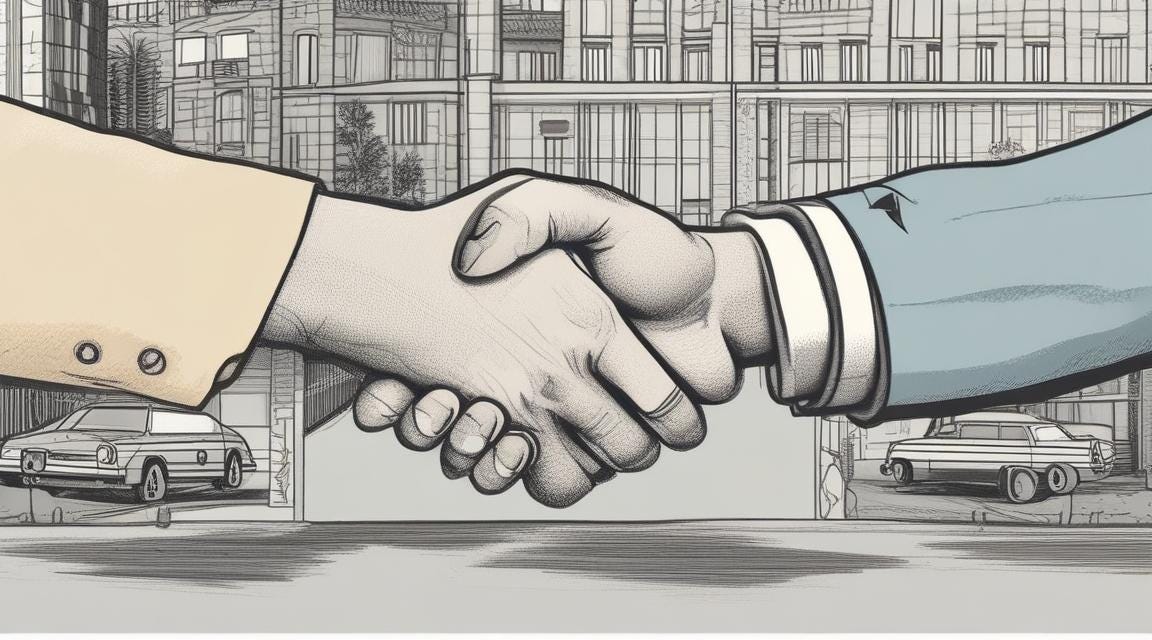Financial Derivatives I – Futures
Learn What is a Futures Contract and How Interest Rates Determine Its Price
If you follow any type of financial content you probably came across the term derivative. In this post we will focus on a specific type of derivative: futures. We will learn what these are and what is their fair price.
What are financial derivatives?
The definition you will find in most places is something like the following:
A derivative is a contract that derives its value from the performance of an underlying entity. [Wikipedia]
What the hell does this mean? How could it possibly not derive its value from something?
Let me explain this with an example. Say you have a business and will need one ton of copper in one month. There are two things you could do:
You could wait one month, go to the market and buy the copper at whichever price it is being sold at the moment.
You could sign a contract with a copper provider in which both of you agree now for a price to buy/sell later (in one month’s time).
Why would Option 2 make sense?
If you are afraid that copper will be too expensive in one month, you might want to secure a lower price now. You will exchange liquidity—cash, money ready to spent—by securing that price.
Note that the copper provider might also want to enter a deal like this. In fact, they do it all the time: whenever you get a discounted price for subscribing to something for a longer period, you are exchanging less money now (and for sure) by more money later (and maybe).
Option 2 is just what a futures contract is. Futures contracts (also known as ‘futures’) are a type of financial derivative. Today we will focus on these.
Wait a second.
Didn’t we say that financial derivatives were ‘contracts that derive their value from the performance of an underlying entity’?
What is even the value of Option 2, our financial derivative?
The value of a future
You and the copper provider made a deal.
Was it a good deal? Or did the copper provider play better than you did?
You cannot know with certainty whether the price of copper will be higher or lower in one year’s time than the price you agreed in your futures contract. It could have skyrocketed and be higher than the price you agreed—in which case you’ve made a good deal—or it could have dropped to negligible value—you paid too much.
It is too hard!
You cannot know with certainty the price of copper in the future, but you can have some expectation. Then we could say that the value of the futures contract is how much you expect to win, on average, by this deal.
Sounds good, right? Except it’s wrong.
The importance of ‘free money’
Let me tell you some good news.
There is technically such a thing as ‘free money’.
In fact, we give away ‘free money’ very often. Each time you take some credit with some interest, that is free money—for the bank! The bank is giving you liquidity—the money now—by a higher return (money plus interest) later.
Now here is the good things.
The bank also gives away free money. You deposit money at the bank—giving it liquidity—and in return they pay you some interest.
Here is one of the key takeaways of this text:
The interest rate offered by banks dictates how a futures contract should be priced.
Before we discuss why, let’s first let’s talk about:
Inflation
We all have heard that ‘a dollar today is not worth a dollar tomorrow’. This is due to inflation.
Things become more expensive with time. We see it all the time: groceries, clothes, transport tickets…they all are more expensive now than they were five years ago.
In fact, inflation is the reason why the ‘free money’ we talked about before even exists. Say you deposit $100 in the bank at a 2% annual interest rate. After a year your account would read:
Did the bank just gift you $2? Of course it didn’t—banks don’t want to lose money.
Instead, the bank got your deposit of $100 and bought a nice pair of jeans for $100 straight away. After a year, due to inflation, that same pair of jeans was selling at $102. They sold them and payed you back with that money.
Okay, I lied before. You cannot make ‘free money’.
It appears as if you just made $2 out of thin air with your deposit, but you didn’t. You could buy a pair of jeans when you deposited the money, and that’s still what you can buy now. Higher number, same value.
Here is another of the key takeaways of this text:
The time value of money: a given amount of money now is worth more than the same amount of money later.
A fair market
Here is a summary of what we’ve learned so far:
Banks offer what appears to be ‘free money’ by paying interest on our deposits.
It is not free money due to inflation.
The above is true as long as the interest rate offered by banks equals the rate of inflation.
Let’s assume this is true. That is, (i) banks don’t want to lose money, so they won’t offer an interest rate that is higher than inflation; (ii) banks are nice to people and they won’t rip you off, so they won’t offer an interest rate that is lower than inflation.
(About (ii): I said let’s assume this.)
So we cannot make ‘free money’ using deposits. This is part of the following common assumption in finance:
No arbitrage principle: there is no way to make ‘free money’ in the markets.
That is, if you want the potential to make money, you will take some risk.
To put it another way: the market is fair (if you could make free money somehow, someone would have to be giving away money—that’s unfair for them!)
The price of a futures contract
Okay, if you made it here, congratulations! We are now ready to price our futures contract.
Suppose that the current price of copper is $5 per pound and the bank offers an interest rate of 2%. What is the fair price of a futures contract to buy one pound of copper in a year’s time?
Unless the price of the futures contract is exactly
then there is an opportunity to make free money in the markets (thus the price would not be fair):
Suppose the price of the futures contract was higher than $5.10. Let’s make free money!
I ask the bank for a loan of $5 and buy a pound of copper with that money.
Now that I have a pound of copper, I can sign a futures contract with someone interested in buying from me in a year’s time (at a price higher than $5.10).
After a year, I would have to give the bank back $5 plus the interest rate of 2%, a total of $5.10.
But I also have my pound of copper and a signed contract to sell it to someone for more than $5.10.
I sell the pound of copper at that higher price, pay the money back and keep the remaining.
There you have it—free money!
Suppose instead that the price of the futures contract was lower than $5.10. Let’s make free money!
I ask my parents for a pound of copper, immediately sell it for $5 (its current price) and deposit that money in the bank.
I go and sign a futures contract agreeing to buy a pound of copper in a year’s time (at a price lower than $5.10).
After a year, the $5 that I deposited in the bank have become $5.10 (the bank payed me an interest)
But the price of the futures contract that I signed was lower than $5.10.
I now have $5.10 (from my deposit in the bank), a contract allowing me to buy a pound of copper for less than $5.10 and I owe a pound of copper to my parents.
I buy a pound of copper for that lower price, give the pound of copper back to my parents, and keep the profit
Again—free money!
Here is the recipe of how to price a future contract:
If an asset is currently trading at S dollars and the current interest rate is r, then a futures contract to buy/sell this asset in T years has to be
(In our example above, S = $5, r = 2% = 0.02 and T = 1.)
What have we learned today?
A futures contract—a type of financial derivative—is an agreement to buy/sell a given asset in the future at a price that we fix now.
The value of money decreases with time: $100 today is worth less than $100 next year.
The no-arbitrage principle is an assumption that excludes the possibility of making ‘free money’: the market is fair for everyone.
Interest rates—which are fixed by banks—determine what is the fair price of a futures contract.
What’s next?
If you liked this post, subscribe below for more!





Muy bien explicado!!
That’s some really interesting content
Keep publishing! (;